Understanding Gold Coin Prices
Disclaimer: Global Coin is a dealer of precious metal coins and does not provide investment, financial, or legal advice. Any information provided, especially regarding purchasing from reputable dealers, is for informational purposes only and should not be construed as investment...

Disclaimer: Global Coin is a dealer of precious metal coins and does not provide investment, financial, or legal advice. Any information provided, especially regarding purchasing from reputable dealers, is for informational purposes only and should not be construed as investment advice, especially in relation to finance. Investors should conduct their own due diligence and consult a qualified financial professional before making any investment decisions. Gold and rare coin investments involve risks, and past performance is not indicative of future results
In my over two decades of chasing the gleam of gold coins—from dusty coin shows to high-stakes auctions—I’ve learned that understanding gold coin prices and why are gold coins different prices goes way beyond just weight and purity. Take two identical 1 oz beauties: one might trade hands for $3,900, hugging the spot price, while another commands $20,000 thanks to its rarity and story. For bullion like the 2025 American Gold Eagle, prices shadow the current spot (hitting $3,850 per ounce today) plus a modest premium. But numismatics, say a 1995-W Proof Silver Eagle in PR-70, can soar to $5,000+ on collector fever alone. In this refreshed guide, this blog post will explore the reasons why gold coins have different prices, unpacking the drivers from market swings to grading magic, with post-1986 moderns I’ve flipped myself. Whether hedging or collecting, compare dealers, factor shipping, and lean on tools like Global Coin’s GCS Index for smart buys.
Key Takeaways
-
Gold coin prices blend spot value with premiums for production, rarity, and condition—bullion tracks metal markets, numismatics chase legacies.
-
In my stacks, modern bullion like the 2025 Gold Eagle offers quick liquidity at ~$3,950, while graded rarities like the 1995-W Silver Eagle PR-70 deliver 10x potential over decades.
-
The GCS Index has been my secret weapon for vetting inventory, scoring on mintage and liquidity to bridge investment and collectibility—Global Coin nails it with pieces like the 2021 Morgan Dollar.
-
Understanding these factors helps buyers make informed decisions when purchasing gold coins.
Gold Coin Authentication and Safety

Before diving deep, I've always preached authentication—it's saved me from fakes more than once. Here's my checklist for spotting legit gold coins, which you might want to validate with a professional coin grading service :
-
Mint Mark: Hunt for that telltale letter (W for West Point on my 2025 Eagles)—it's the mint's signature.
-
Weight and Purity: Stamps should match specs; a 1 oz 22K Eagle weighs 1.0909 troy oz at 91.67% pure.
-
Serial Number: Cross-check with mint records or certs for traceability.
-
Certification: PCGS or NGC slabs are non-negotiable—guaranteed condition and authenticity.
-
Packaging: Tamper-free boxes from the mint scream legit; I've passed on suspect wraps.
Buy from pros like Global Coin, verify against spot, and insure—diligence turns buys into keepers.
Introduction: Why Gold Coin Prices Are More Complex Than You Think

Understanding gold coin prices means grasping the invisible forces at play, including various factors that influence premiums such as coin purity, market demand, and production costs. I’ve seen identical specs fetch wildly different sums at shows—one for melt, another for its milestone status. Post-1986 moderns, like limited commemoratives, mix bullion stability with numismatic spark, perfect for today’s volatile world. Let’s break it down.
What are Gold Coins?

Gold coins have been my tangible lifeline—physical gold you can hold, hedge against inflation, and admire. Minted with artistry, they possess intrinsic value and are my blend of beauty and security, diversifying portfolios when stocks wobble.
Types of Gold Coins
I’ve built around two camps: bullion for the metal, numismatics for the narrative. The primary factors that distinguish these types of gold coins include manufacturing costs, gold content, minting processes, numismatic value, supply and demand, and dealer premiums.

Bullion Coins
Gold bullion coins are my workhorses—valued on gold content and produced by sovereign mints. The 2025 American Gold Eagle, Canadian Maple Leaf, or Krugerrand, each containing one troy ounce of pure gold, track spot religiously and are ideal for investors stacking ounces.
Numismatic Coins

My passion projects: Rarity and history inflate values beyond melt. The premium for one coin can be significantly higher than another, even if both have similar gold content, due to factors like rarity, condition, and collector demand. Limited runs with unique designs, like Proof versions, draw collectors—I’ve chased pedigreed moderns for that long-game thrill.
The Foundation: Spot Price of Gold & Market Demand
Spot price, benchmarked by COMEX and LBMA, sets the floor—$400/oz in 1986, now $3,850, a 10x leap. Influences I’ve ridden:
-
Central Bank Policies & Interest Rates: Low rates in 2020 juiced gold past $2,000; 2022 hikes cooled it, but cuts now push $3,800+.
-
Inflation & Economic Uncertainty: Post-2008 and COVID spikes proved its hedge chops.
-
Geopolitical Events & Currency Fluctuations: Ukraine 2022 and elections today fuel safe-haven bids.
The final price of a gold coin is determined by both the spot price and additional factors like purity, minting costs, numismatic value, and market demand.
Bullion like my 1986-W Eagle mirrors these; numismatics? They weather dips better.
Manufacturing and Costs: How Production Influences Gold Coin Prices
When it comes to gold coin prices, there’s a lot more under the surface than just the price of gold per troy ounce. One of the most overlooked drivers is the actual cost of manufacturing each coin—a factor that can make a surprising difference, even between two coins with identical gold content.
Every gold coin, whether it’s a classic American Gold Eagle, a Canadian Gold Maple Leaf, or a South African Krugerrand, carries its own set of manufacturing costs. These include everything from the raw materials and labor to the specialized equipment and intricate designs that sovereign mints employ. For example, the Canadian Gold Maple Leaf is renowned for its detailed security features and high-purity gold, which require advanced minting technology and add to its production costs. The American Gold Eagle, with its unique alloy and iconic design, also incurs distinct manufacturing expenses. Even the Krugerrand, famous for its durability and global recognition, has its own cost structure based on its composition and minting process.
These manufacturing costs are a key reason why the premium attached to gold coins can vary so widely. The premium isn’t just a dealer’s markup—it reflects the real-world expenses of turning raw gold into a finished, legal-tender coin. Limited mintage, special features, and intricate designs can all drive up these costs, especially for numismatic coins that are highly sought after by collectors. Coins with historical significance or those graded by a professional coin grading service like PCGS or the Numismatic Guaranty Corporation (NGC) often command higher premiums, as their rarity and condition add value far beyond their melt value.
But manufacturing is just one piece of the puzzle. Market demand, collector interest, and broader economic uncertainty can all influence the selling price of gold coins. In times of market volatility, demand for precious metals surges, and so do premiums—especially for coins with limited availability or unique features. Collector demand for certain issues, such as commemorative releases or coins with a limited mintage, can push prices even higher, as these coins become more difficult to find.
When purchasing gold coins, it’s essential to look beyond just the spot price of gold. Reputable dealers like JM Bullion provide transparency on melt value, premiums, and the key factors that determine a coin’s price. Always verify the authenticity and condition of any coin—grading by a professional service is a must for numismatic coins—and make sure you’re buying from a trusted source to protect your investment and ensure you’re getting the best value.
In short, understanding the manufacturing and production costs behind gold coins is crucial for making informed investment decisions. By factoring in everything from minting expenses to collector demand and market trends, you’ll be better equipped to navigate the world of gold coin prices and build a collection—or portfolio—that stands the test of time.
Bullion Gold Coin Prices: What Drives Them?
-
For a 2025 1 oz Gold Eagle ($50 face), pricing boils down to:
-
Metal Content & Purity: 22K for durability vs. 24K Maple Leafs—purity purists pay a tad more.
-
Premiums Over Spot: Minting and dealer cuts add $50-$150; my 2025 Eagle hit $3,950 at $3,850 spot.
-
Legal Tender Status & Government Backing: Sovereign trust eases global flips.
-
Market Supply & Mint Production: Scarce years like 2006-W Buffalo bump premiums.
-
Size & Fractional Gold Pricing: 1/10 oz fractions premium 20-30% per gram for set builders.
Competitive pricing among online gold coin dealers can significantly influence the purchase price of bullion gold coins, making it important for buyers to compare options to ensure a secure and cost-effective purchase.
-
Numismatic & Graded Gold Coin Prices: The Value Beyond Gold

Numismatics transcend metal—my 1995-W Proof Silver Eagle PR-70? $5,000+ vs. $30 melt, thanks to:
-
Rarity & Mintage Numbers: 30,125 minted for 1995-W; 2021-W Reverse Proofs echo that scarcity.
-
Coin Grading & Condition: MS-70 triples values—a 1987-W Constitution $5 in MS-70? $1,500 vs. $500 MS-69.
-
Historical & Collector Demand: Milestones like 2001-W Buffalo Proofs tap nostalgia, spot-independent.
-
Other Reasons: Factors such as age, provenance, and historical significance can also increase a coin's value, along with scarcity and collector interest.
Case Study: Modern Rarity Appreciation
Compare my first-year 1986-W Gold Eagle Proof ($487 issue) to a 2025-W: Early ones now $2,500-$3,000, 5x up, as rarity compounds.
The Role of the GCS Index in Pricing Rare Gold Coins
Global Coin's GCS Index is my grading gospel—scores rarity (2021-W Type 2 Eagles), history (1987-W Constitution), condition (MS-70 Proofs), and liquidity (2011-W Burnished). It curates gems like the 2021 Morgan (200k cap) for now-and-later value.
Comparing Bullion vs. Numismatic Gold Coin Prices: Which Is the Better Investment?
I’ve crunched this table from my ledger:
|
Factor |
Bullion (e.g., 2025 Gold Eagle) |
Numismatic (e.g., 1995-W Silver Eagle PR-70) |
|---|---|---|
|
Base Value |
Spot + 2-5% premium (~$3,950) |
Melt + rarity premium ($5,000+) |
|
Liquidity |
High; quick flips |
Medium; collector market |
|
Appreciation |
Tracks gold (5-10% yearly) |
10x+ over decades |
|
Risk |
Market volatility |
Condition/grading shifts |
|
Best For |
Hedging/short-term |
Long-term collection |
An investor will weigh the pros and cons of bullion versus numismatic coins, considering factors like premiums, market demand, and how each asset fits into a diversified investment portfolio.
Bullion for flips, numismatics for fortunes—GCS bridges ‘em at Global Coin.
Investment Scenarios
Bars? Gold bars are simpler for stackers and offer lower premiums, making them a cost-efficient choice for those who want to invest in larger quantities. Some investors choose to invest in gold bars specifically for their lower entry costs and straightforward specifications, though coins often win on resale.
Conclusion: Making Smart Gold Coin Investment Decisions
Understanding gold coin prices means investing and balancing spot swings, premiums, and pedigrees—bullion for metal muscle, numismatics for narrative power. When evaluating gold coin prices, be sure to take account of all additional costs, such as shipping, insurance, and dealer premiums, as these can significantly impact your total investment. Weigh your horizon: liquidity now or legacy later? Global Coin’s post-1986 exclusives, from minty 2025 Eagles to GCS-vetted 2021 Morgans, hit both. I’ve built wealth there—time to stack yours?
FAQ Section
Why do graded gold coins cost more than bullion?
Grading adds rarity and condition premiums beyond melt—my MS-70s fetch multiples.
How does the GCS Index pick investment-worthy coins?
It weighs rarity, history, grade, and liquidity for determining proven growers and sellers.
Are modern bullion coins a good hedge in 2025?
Absolutely—with spot at $3,850 and uncertainty brewing, they influence the selling price and shield and liquidate fast.
Related Articles
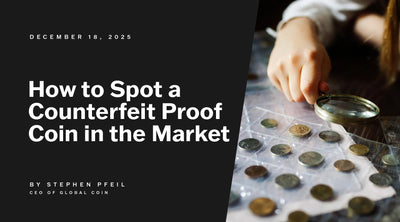
How to Spot a Counterfeit Proof Coin in the Market
How to Spot a Counterfeit Proof Coin in the Market In the world of numismatics, few things hold ...
Discover More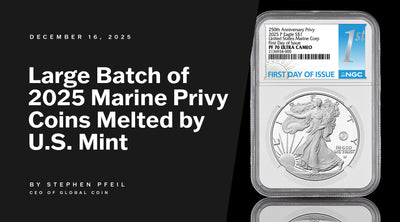
BREAKING NUMISMATIC NEWS: Large batch of 2025 Marine Privy Coins MELTED by U.S. Mint
BREAKING NUMISMATIC NEWS: Large batch of 2025 Marine Privy Coins MELTED by U.S. Mint A historic ...
Discover More
Tax Implications When You Sell Gold Bullion in Different States
Disclaimer: The following content is for informational purposes only and should not be construed ...
Discover More

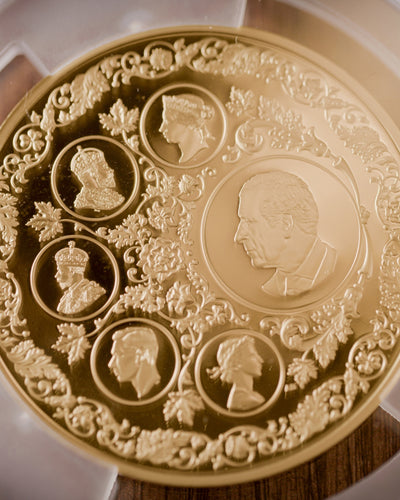
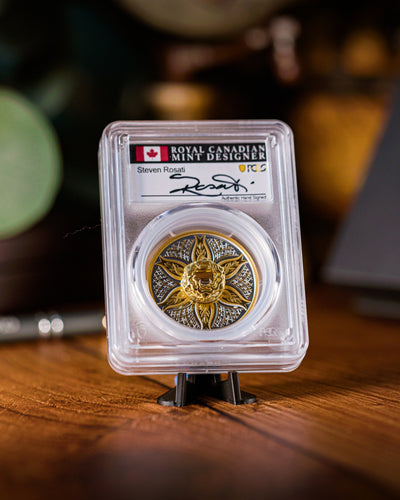
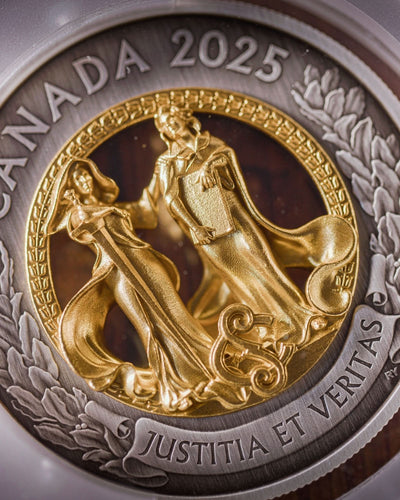
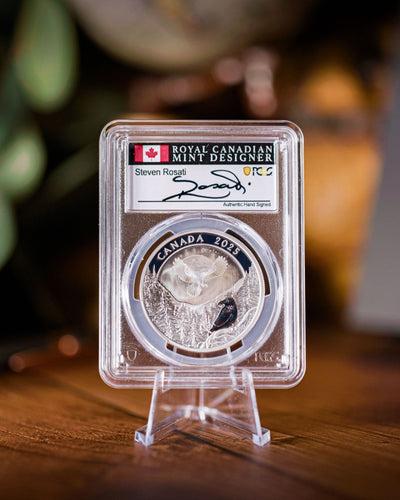
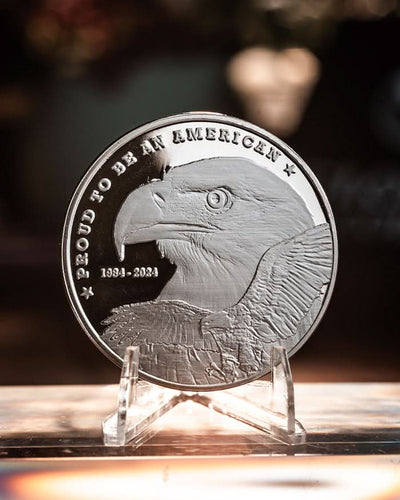
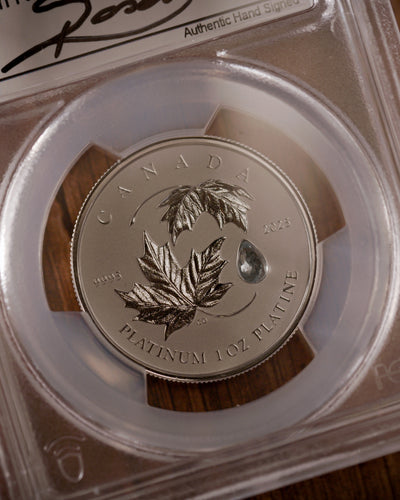
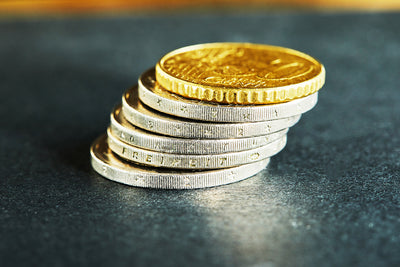
Leave a comment
This site is protected by hCaptcha and the hCaptcha Privacy Policy and Terms of Service apply.